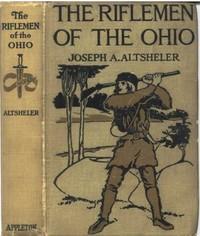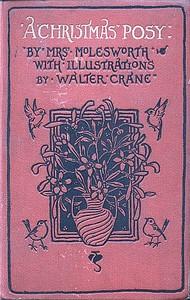|
|
Read this ebook for free! No credit card needed, absolutely nothing to pay.Words: 115633 in 35 pages
This is an ebook sharing website. You can read the uploaded ebooks for free here. No credit cards needed, nothing to pay. If you want to own a digital copy of the ebook, or want to read offline with your favorite ebook-reader, then you can choose to buy and download the ebook.

: Practical Taxidermy A manual of instruction to the amateur in collecting preserving and setting up natural history specimens of all kinds. To which is added a chapter upon the pictorial arrangement of museums. With additional instructions in modelling and@FreeBooksWed 07 Jun, 2023 is as follows: The nets, which are of two pieces, are each about twelve yards long by two-and-a-half yards wide, and are made with a three-quarter mesh of what is technically called two-thread. The staves at each end, to which the nets are permanently attached, are made of red deal, ferruled and jointed at the middle, in the manner of a fishing rod, for the convenience of carriage. The length of each when put together is about five feet six inches, being thus shorter than the width of the net. This, it will be readily observed, allows for the bagging of the net--an important particular, as, if the nets were strained tight with no allowance made for bagging, the birds would flutter along the ground until they got out at one end or the other. As it is, they roll themselves up in the meshes, and effectually entangle themselves while attempting to escape. A strong line, called the top line, made of clock line, passes the whole length of each net, and is protracted some feet past the staves at either end. A similar line runs along the bottom made of three-thread or whip thread. This is called the bottom line. There are then two unattached cords of some strength, called the pull line and the forked line, which latter is attached, when required for use, to the two staves nearest the birdcatcher, at the intersection of the top line. Eight pegs are used, made of hard wood, generally ash, four of which are called the "chief pegs." The whole of the pegs are notched, for the convenience of attaching a line. The method of laying the clap-net is best described with the aid of a drawing . The first thing to be done is to lay down the right-hand net, and to drive in the two chief pegs where shown, namely, at the bottom of the staves, to which they are attached by a loop of strong cord, acting as a hinge. The two end pegs are then driven in the ground at some little distance from and in an exact line to the chief pegs. The bottom line is then made fast at each end, as also the continuation of the top line. The two pegs, lines, and staff thus forma triangle at each end. The other net is then laid in such a manner that when both are pulled over, one net shall overlap the other to the extent of six inches. It is then turned back and pegged down in the same way as the right-hand net. The next operation is to tie the forked line to each top end of the staves, a nick being cut in each for this purpose. Exactly in the centre of the forked line the pull line is knotted, at the other end of which the birdcatcher stands at varying distances, according to the bird he wishes to catch; for instance, for linnets or goldfinches, thirty to forty yards; for starlings a greater distance is required; or to capture these wary birds a better plan is to place the nets in one field while you retire into another, bringing the pull line through an intervening hedge. Cages containing birds are dispersed about on the outer edges of the nets, the best, or call birds, being placed farther away; in fact, my informant thinks that if all the cages were placed a moderate distance away from the nets it would be better, as he has found that the usual red or green cages have been the means of "bashing "--i.e. frightening--the wild birds away from the nets. Fig. 5--PLAN AND METHOD OF SETTING CLAP-NET. "When doctors differ, who shall decide?" On mentioning the above to another birdcatcher he gave a huge snort of dissatisfaction, and roundly swore that my man knew "nought about it," for he always set his cages as near the nets as possible; "for don't it stand to reason," quoth he, "that if you set your cages fur away, your 'call birds' will 'tice the wild 'uns down round 'em? an' they won't come near your nets." An important actor in the performance is the "play-bird," which is a bird braced by a peculiar knot or "brace," as shown in Fig. 6, on an arrangement called the play-stick. The "play-stick" is resolvable into three parts, Fig. 7 being the ground peg, formed of a piece of hard wood about six inches long, having a round hole bored through close to the top, through which the "play-line" passes. Immediately underneath is a square slot for the reception of a piece of brass tube beaten flat at one end , while the other end is left open for the reception of the "play-stick" , simply a rough twig or piece of hard wood, upon which the bird is tied by the "brace" --which is constructed, as shown in drawing, by doubling a piece of string, tying a knot in the centre and then joining the ends. The head and body of the bird is thrust through, so that a loop catches it on each side and in front of the wings, the legs and tail being thrust through the other, one loop coming on each side of the body behind the wings. A swivel is attached at one of the knots, and, by another piece of string, is made fast to the play-stick near its end. The bird is thus perfectly free so far as the wings and legs are concerned. Free books android app tbrJar TBR JAR Read Free books online gutenberg More posts by @FreeBooks
: Der Hansische Stahlhof in London Ein Vortrag gehalten im Saale des goldenen Sterns zu Bonn am 11. März 1856 by Pauli Reinhold - Speeches addresses etc.; Europe History Hanseatic League DE Sachbuch@FreeBooksWed 07 Jun, 2023

: The Riflemen of the Ohio: A Story of the Early Days along The Beautiful River by Altsheler Joseph A Joseph Alexander - Frontier and pioneer life Juvenile fiction; Ohio River Juvenile fiction@FreeBooksWed 07 Jun, 2023
|
Terms of Use Stock Market News! © gutenberg.org.in2025 All Rights reserved.






